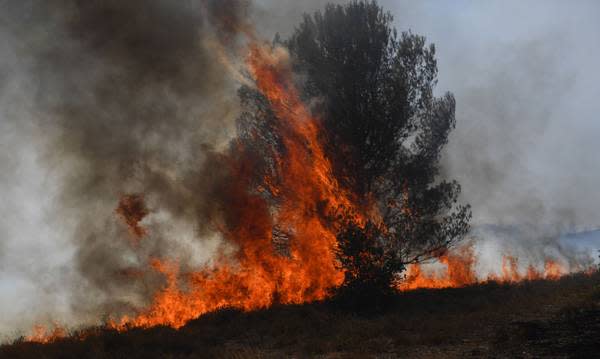Firefighters continued, Friday (15), their relentless battle against the flames in France and the Iberian Peninsula, where high temperatures did not subside, while the United Kingdom declared a national emergency for some areas, which may reach or exceed the maximum. 40 degrees Celsius for the first time on Monday and Tuesday – the highest temperature in the country was 38.7 degrees, recorded at Cambridge University Botanic Gardens on July 25, 2019. In Ireland, thermometers can reach 33.3 degrees Celsius, an absolute record. It has not been broken since 1887.
Context: Europe is cooking so hot because it burns more coal
Climate crisis: fires spread across southern Europe, Spain suffers peak heatwave
“Extraordinary temperatures are likely to occur and possibly record-breaking as early as next week,” Paul Gundersen, chief meteorologist at the Met Office, UK Climate Authority, said in a statement. “The nights are expected to be exceptionally hot, especially in urban areas,” he added.
On the Bureau of Meteorology’s website, a Level 4 Red Alert is defined as a national emergency and is used when a heat wave is so severe and/or prolonged that its effects extend beyond the health and social care system.
Most of Europe has faced a strong heat wave in recent weeks, with several countries recording temperatures of 40 degrees or more, such as Portugal, Spain, France and Croatia.
In the region of Extremadura, southwest Spain, on the border with Portugal, where thousands of hectares have been burning since the beginning of the week, a new fire was announced Thursday noon. And this Friday, this focus represents an “unfavorable development” that threatens Monfrago National Park, a natural area protected with its biodiversity.
Across the border in Portugal, more than 2,000 firefighters battled four major fires on Friday in the north and center of the country. According to the Portuguese Civil Protection, the fires have already killed one person and injured 60 others.
238 more deaths: Above-average deaths last week in Portugal may be linked to heat wave
Although the situation has improved somewhat, Portuguese President Marcelo Rebelo de Sousa urged people on Thursday night to remain vigilant. Since the beginning of the year, just over 30,000 hectares have burned in Portugal, the highest number since July 15, 2017, the year the fires left 100 people dead.
In Portugal, which hit 47 degrees Celsius on Thursday in the north of the country, a record for July, the maximum temperature is expected to reach 41 degrees Celsius on Friday.
“Something after the end of the world”
In southwestern France, where two fires have burned about 7,000 hectares since Tuesday, mainly in the tourist area of Dune de Pilat, on the Atlantic coast, the situation is “still not favourable”, the Gironde province announced.
These fires, which required the work of a thousand firefighters, forced the evacuation of about 10,000 people.
Karen, a resident of Kazaux, said Thursday, before the pre-emptive evacuation of the city, shrouded in smoke and ash hanging, located near the huge sand dunes, from Pilate.
After reaching 37/38°C in the southwest and in the Rhone Valley, temperatures in France are expected to reach 38/40°C south of the line formed between Bordeaux and Lyon.
In Spain, it seemed that the peak of the heat wave had passed, but the temperatures did not give a respite to residents of many regions of the country, who will have to wait until next week for them to cool down a little.
At 7:00 am (2:00 am Brasilia time), the thermometers in the province of Badajoz (southwest) were already at 37.2 ° C. Maximum temperatures in several parts of the country are expected to reach 44 degrees Celsius on Friday.
The problem is not unique to Europe: a person died in the fires raging in northern Morocco.

“Food fanatic. Organizer. Hipster-friendly tv specialist. Avid reader. Devoted web ninja.”

